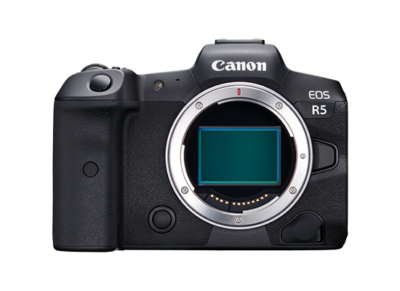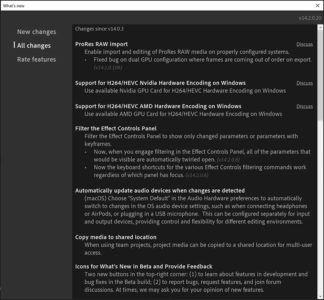With NAB’s big convention in Las Vegas canceled this year due to Corona virus, a number of technology companies still have products to release that they would have presented to the public during NAB. The first one of those was Blackmagic Design, which released a number of products targeted at live video production and streaming at the beginning of the month. Their existing Pocket Cameras can now be used as studio cameras, fully controlled from any ATEM switcher. There is also a new mini-switcher that integrates an H.264 encoder and streaming engine, and presents itself as a webcam to your computer.  This focus on streaming makes sense, with that market broadening at the moment, as numerous aspects of daily life are now moving more online, at least for the time being. They also released a new update to Resolve, which focuses on improved GPU acceleration of playback and encoding for various formats and codecs.
This focus on streaming makes sense, with that market broadening at the moment, as numerous aspects of daily life are now moving more online, at least for the time being. They also released a new update to Resolve, which focuses on improved GPU acceleration of playback and encoding for various formats and codecs.
 Canon has announced a couple of new cameras that appear to be noteworthy. The C300 MarkIII can shoot up to 4Kp120 in Cinema RAW Lite or 4:2:2 XF-AVC, to CFexpress cards, with its new Dual Gain Output sensor. The sensor is read at two amplification levels, to capture both the bright and dark image info simultaneously, combined into an image that Canon claims has up to 16 stops of dynamic range. Also coming soon is the EOS R5, which is a mirror-less full frame DSLR. It offers 8K video capture at up to 29.97fps, and 4K at up to 120fps without cropping. It can record to RAW files, or 4:2:2 10bit H.265 files, in Canon Log or HDR PQ color-spaces. It utilizes Canon’s Dual Pixel CMOS AF to keep things in focus, and seems to be a well rounded top end video DSLR.
Canon has announced a couple of new cameras that appear to be noteworthy. The C300 MarkIII can shoot up to 4Kp120 in Cinema RAW Lite or 4:2:2 XF-AVC, to CFexpress cards, with its new Dual Gain Output sensor. The sensor is read at two amplification levels, to capture both the bright and dark image info simultaneously, combined into an image that Canon claims has up to 16 stops of dynamic range. Also coming soon is the EOS R5, which is a mirror-less full frame DSLR. It offers 8K video capture at up to 29.97fps, and 4K at up to 120fps without cropping. It can record to RAW files, or 4:2:2 10bit H.265 files, in Canon Log or HDR PQ color-spaces. It utilizes Canon’s Dual Pixel CMOS AF to keep things in focus, and seems to be a well rounded top end video DSLR.
The development that will have the greatest impact on my day to day work is definitely Adobe’s release of their newest update to Premiere Pro last week, bringing it to version 14.1. This is the version that supports their previously announced “Productions” based workflow. Productions are collections of smaller, interconnected projects, which make it easier to collaborate with others on larger undertakings, and cuts project size and load times.  They also have made Team Projects available to all Creative Cloud subscribers for the next few months, to help media organizations more easily support users working at home. While Productions are designed to be shared by users on a local network, Adobe’s existing Team Projects architecture is designed to help remote users with separate copies of their source media, easily keep the sequences and editing changes in sync with one another. I plan to use this trial period to test out Team Projects on my own web series, what I collaborate with a few others across the US on. We normally keep our work in sync manually, but a cloud based database of editing changes should be much more efficient.
They also have made Team Projects available to all Creative Cloud subscribers for the next few months, to help media organizations more easily support users working at home. While Productions are designed to be shared by users on a local network, Adobe’s existing Team Projects architecture is designed to help remote users with separate copies of their source media, easily keep the sequences and editing changes in sync with one another. I plan to use this trial period to test out Team Projects on my own web series, what I collaborate with a few others across the US on. We normally keep our work in sync manually, but a cloud based database of editing changes should be much more efficient.
 Adobe also recently shifted from a closed beta by invitation only, to allowing any of their subscribers to access the beta versions where they are developing new features. David Simons joined Jason Levine for a Livestream last Friday, presenting the new beta apps in Creative Cloud to users. The betas can be installed in parallel with the release versions, and they have built in ways of communicating issues with the development teams, directly in the UI. This allows us to see and talk about what else is coming next, with a number of new Premiere Pro features that caught my eye. The main one is ProResRAW, which I don’t need personally, but it is interesting to note, from an industry perspective. They are also testing GPU based encoding acceleration, on both NVidia and AMD hardware, to complement the existing Intel QuickSync based option, which is ironically unavailable on high end Xeon based workstations like mine. My first test of 8K DNxHR to 4K H.264 encoded in real-time, and looked good, so that is encouraging.
Adobe also recently shifted from a closed beta by invitation only, to allowing any of their subscribers to access the beta versions where they are developing new features. David Simons joined Jason Levine for a Livestream last Friday, presenting the new beta apps in Creative Cloud to users. The betas can be installed in parallel with the release versions, and they have built in ways of communicating issues with the development teams, directly in the UI. This allows us to see and talk about what else is coming next, with a number of new Premiere Pro features that caught my eye. The main one is ProResRAW, which I don’t need personally, but it is interesting to note, from an industry perspective. They are also testing GPU based encoding acceleration, on both NVidia and AMD hardware, to complement the existing Intel QuickSync based option, which is ironically unavailable on high end Xeon based workstations like mine. My first test of 8K DNxHR to 4K H.264 encoded in real-time, and looked good, so that is encouraging.  They are also adding a way to filter down the Effects Panel variables to only show the ones that have been edited, or key-framed, similar to using the “U” key in After Effects, which is a much needed function as more options are added there. They are also working on a way to sync the audio output settings with the OS on Mac, and I can’t wait to see something similar in Windows. These are not headline grabbing features, but they will help save time for a broader set of users than ProResRAW support or other more technically challenging accomplishments.
They are also adding a way to filter down the Effects Panel variables to only show the ones that have been edited, or key-framed, similar to using the “U” key in After Effects, which is a much needed function as more options are added there. They are also working on a way to sync the audio output settings with the OS on Mac, and I can’t wait to see something similar in Windows. These are not headline grabbing features, but they will help save time for a broader set of users than ProResRAW support or other more technically challenging accomplishments.
I am in the closing stages of a major film right now, which we are not going to upgrade to a new version this late in the game, but I am looking forward to how much easier my next big project will be, now that all of these new capabilities are available.

